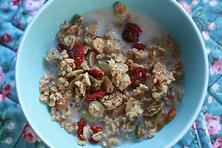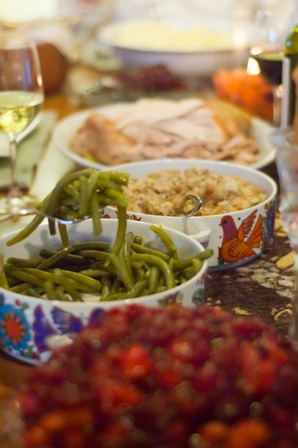
When you think ‘pumpkin’ this time of year I am sure your mind goes directly to a major tradition usually found on the Thanksgiving table; the pumpkin pie. While the whipped cream that tops pie is hard to overlook, the wide array of nutrients in the pumpkin itself often goes unnoticed.
Pumpkin offers many nutrients and is considered a good source of potassium and vitamin C as well as an excellent source of vitamin A. The benefits do not stop there! Pumpkin also provides fiber, many other micronutrients and of course those beneficial bioactive components called phytochemicals that are often found in whole foods. Even the pumpkin seeds lend themselves as a good source of fiber, protein, and healthy fats (1 ounce has 5 grams of protein, 5 grams of fiber, 5 grams of fat).

Vitamin A maintains eye health and mucous membranes, promotes healthy skin and a healthy reproductive system, may improve the immune system, and also acts as an antioxidant that neutralizes damaging free radicals. Potassium aids in muscle contraction, normalizes fluids as well as blood pressure and promotes heart health. Vitamin C promotes collagen synthesis, neurotransmitter synthesis, and wound healing and also may reduce the risk of some cancers and heart disease.

So if you find that you have some leftover pumpkin this holiday season, don’t wait to use it until you bake another pie. Instead, try incorporating pumpkin in alternative ways such as in a soup, in pancakes, oatmeal, toasting the seeds and including them in a salad or trail mix, throwing it into a smoothie or whipping it into some oatmeal, you could even use it while baking as a means of reducing the oil.
How does pumpkin fit into your holiday traditions?
Tell us in the comments section below!
Photo Credits:
Pumpkin: photo credit: LollyKnit via photopin cc
Pumpkin seeds: photo credit: SweetOnVeg via photopin cc
Thanksgiving dinner: photo credit: SweetOnVeg via photopin cc




